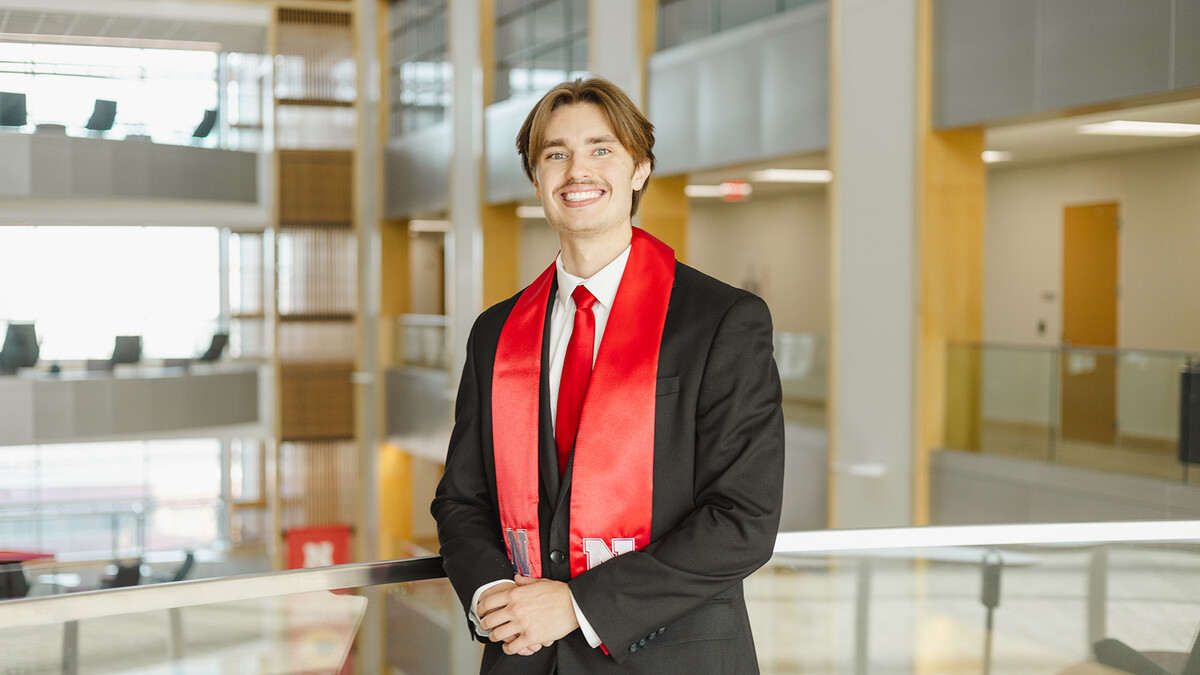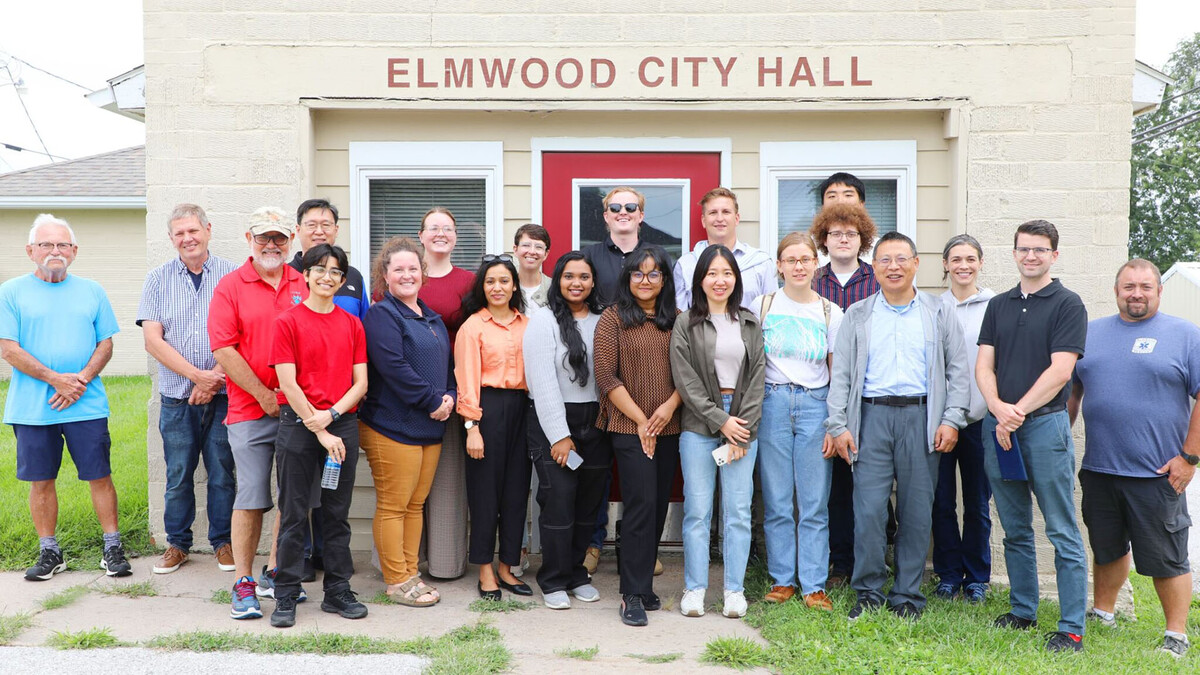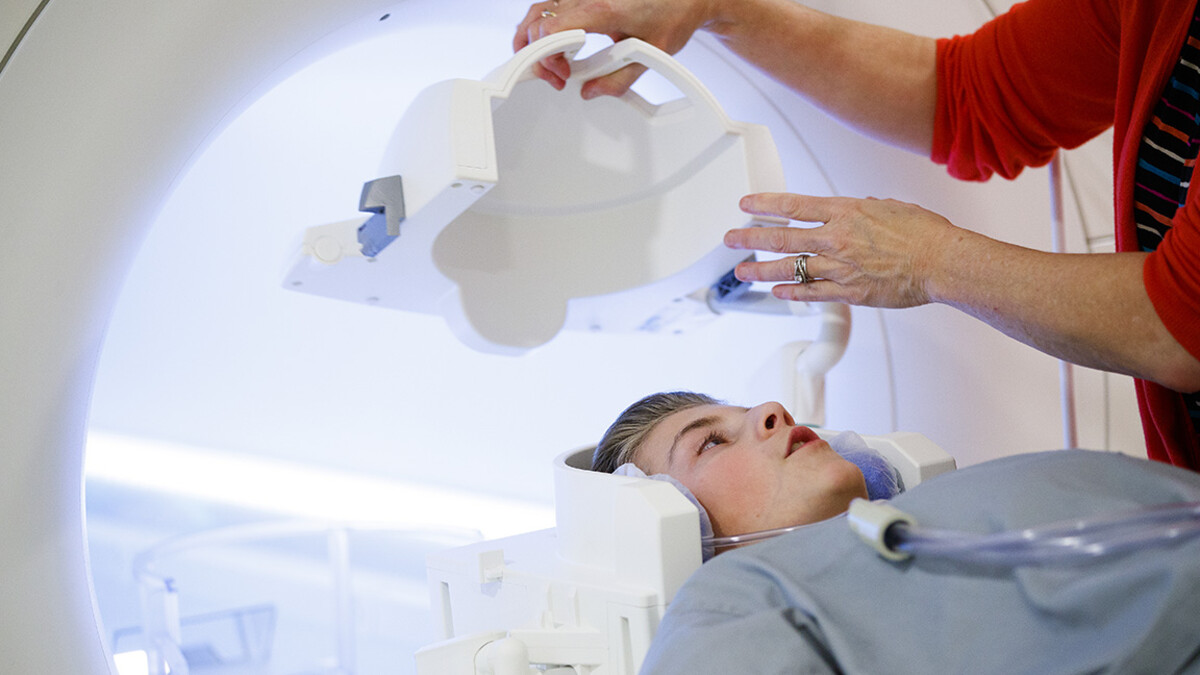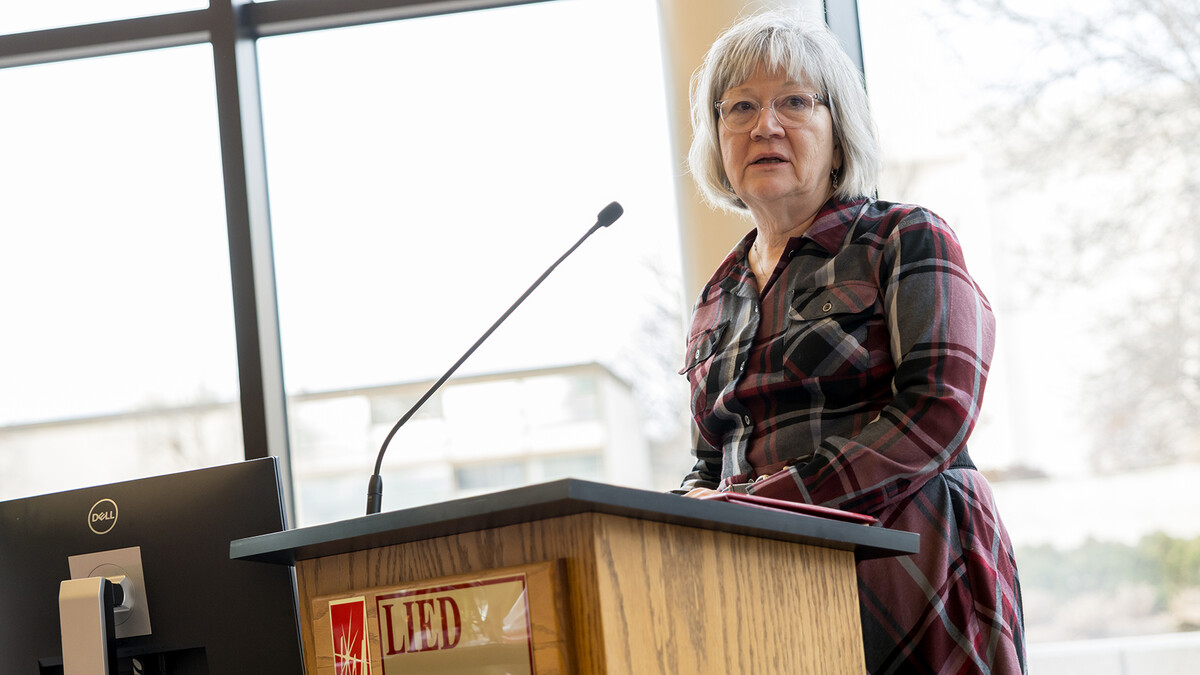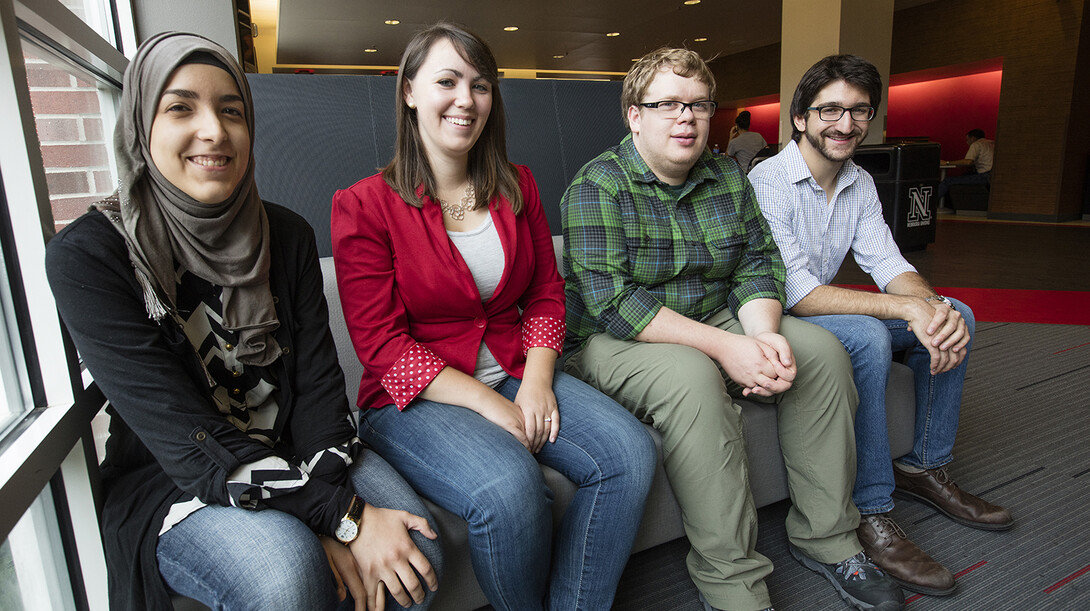
Four emerging Nebraska scholars have joined the ranks of Nobel Prize winners and a Google co-founder by earning the longest-running fellowship available to U.S. graduate students.
Tasneem Bouzid, Tyler Corey, Abbey Riemer and William Jamieson have received the National Science Foundation’s Graduate Research Fellowship, which was awarded to just 12 percent of this year’s applicants. Each will receive three years of NSF support totaling $46,000 annually.
Tasneem Bouzid, mechanical and materials engineering
She attended a Lincoln high school. She earned a bachelor’s degree from Nebraska. And when it came time to decide where she would pursue her graduate studies, family ties kept Tasneem Bouzid home.
They also motivate the research funded by her NSF fellowship.
“My specific project surrounds diabetes, one of the most prevalent diseases in the world,” Bouzid said. “It is (also) hugely important to me personally, as a few of my close relatives have it.”
In an effort to combat the disease, the first-year master’s student has launched herself into functional tissue engineering under the guidance of adviser Jung Yul Lim. This growing branch of biomedical engineering offers a platform for designing systems that might replace or simply improve the tissue functioning that profoundly influences human health, she said.
Bouzid and the Lim Laboratory are examining whether the stretching of certain fat cells can drive changes in hormone secretion that may, in turn, affect the body’s sensitivity to insulin. Finding evidence of this pathway — and exploring the mechanisms responsible for it — could inform new strategies for addressing diabetes, she said.
“It is a new project the lab has taken up, and I am excited and honored to help get it started and running,” Bouzid said. “Results from this study may be revolutionary in the understanding of insulin insensitivity and obesity. It may help transform modern diabetes treatment and medicine.”
Bouzid credited UNL’s engineering faculty and resource-rich culture for providing undergraduate opportunities that ultimately helped her identify a lab suiting her interests and goals.
Those goals include pursuing a doctorate in biomedical engineering or a related field. Beyond that, Bouzid said she hopes to apply her research knowledge toward developing products that can clinically treat diseases.
“I have always been passionate about medicine,” she said. “Biomedical engineering really combines the problem-solving skills of an engineer with knowledge of biology in order to enhance healthcare. Sometimes what patients need is a practical solution to their health issue — something accessible and affordable that can improve the quality of their lifestyle.”
Tyler Corey, biological sciences
Doctoral student Tyler Corey says the arachnids that he studies resemble “nightmare crab demons” — but does so with an admiration reflected by his research.
Corey is studying a nocturnal order of arachnids known as amblypygids, which are sometimes called whip spiders because of the flexible forelegs they use to navigate, hunt and communicate.
Though he’s fascinated by the array of communication systems exhibited across all life forms, Corey said the elongated appendages and complex displays of amblypygids represent an especially rich case study in how, what and why animals communicate.
“Is there a better example than arachnids that communicate to each other through elaborate displays of vibrating and clashing appendages, in the depths of the night, while clinging to vertical surfaces in the tropical rainforest?
“I believe they have the potential to engage our curiosity,” Corey said, “while helping us discover facets of animal behavior, evolutionary biology and ecology that we are only just beginning to understand.”
As a graduate of Tufts University who hails from Syosset, New York, he cited the camaraderie and quality of Nebraska biologists when explaining what drew him to Lincoln.
“I chose Nebraska for the sense of community in my lab and research focus,” said Corey, who is advised by Eileen Hebets. “The interests that we share, both academically and otherwise, foster a degree of dialogue and closeness that I immediately connected to. The density of great scientists and great people in the School of Biological Sciences is incredible.”
Befitting a researcher so captivated by communication, Corey said he plans to spread his enthusiasm for animal behavior by joining academia after finishing his doctorate.
“I hope to use my research to engage my students, whether that means leading them toward (their own) careers in research and teaching or just passing on some facet of biology that stays with them and keeps them thinking,” he said.
“Perhaps more importantly, I want to use my work as a vessel for communicating science to non-scientists and help show people how awesome and important biology is!”
Abbey Riemer, psychology
When Abbey Riemer was a girl, she saw in engineering a potential career path. That outlook began shifting as she entered high school, where she noticed — and felt isolated by — the scarcity of females pursuing science, technology, engineering and math.
With the support of her NSF fellowship, the third-year doctoral student is now investigating how sexist and objectifying experiences shape other young women’s STEM-related perceptions and goals.
Technology represents both a subject and driver of Riemer’s research project: Her study participants are using a smartphone app to record their experiences and goals in real time. The conclusions that Riemer draws from this data could inform efforts to balance the historical skew in gender representation within STEM fields, she said.
“The research from this grant will lay the initial foundation for developing a theoretical model that would explain how other discriminatory behaviors that adolescent girls face influence their thoughts, feelings and behaviors in STEM,” Riemer said. “My hope is that this model will lead to interventions aimed at increasing girls’ feelings of agency in STEM and other stereotypically masculine domains.”
Riemer, a first-generation college student from Milwaukee who earned her bachelor’s degree at Bradley University, said the reputations of the university’s “remarkable” psychology program and her adviser, Sarah Gervais, were major factors in her decision to attend Nebraska.
“I’ve already worked on numerous groundbreaking, high-impact research projects and collaborated with colleagues within the university and beyond,” Riemer said. “Being from the Midwest, I also love the feeling I get from living in Lincoln and being a Nebraska student.”
Her experiences at Nebraska have helped cement Riemer’s long-term goal of furthering her research in a university setting while inspiring the next generation of students to embark on their own.
“I hope to follow a career path in academia so I can continue not only to conduct research,” Riemer explained, “but so that I can share my passion for it with other young, enthusiastic scholars, especially other first-generation college students.”
William Jamieson, mathematics
“I like (analyzing) problems that are grounded in the everyday world, especially those grounded in important issues,” said NSF fellow William Jamieson, a doctoral student in applied mathematics.
To address such problems, Jamieson investigates the mathematics underlying fluid mechanics – a branch of physics focused on how liquids and gases respond to various forces.
He also studies partial differential equations, a staple of advanced calculus that examines how quickly the relationship between multiple independent variables and a dependent outcome changes when altering just one of the variables at a time.
Though many of these equations derive from natural phenomena, he said, some are “poorly understood from the mathematical perspective.”
“I hope to push the study of various phenomena further in the mathematical arena,” he said, “and provide new or improved numerical modeling tools that can be applied by the actual scientists who study … these phenomena.”
In this vein, Jamieson has begun analyzing how to develop climate models that yield accurate simulations and can be handled by the current class of supercomputers.
“The reason I started down this path is that it combines the two things that I enjoy academically: mathematical analysis and large-scale computing,” he said.
Originally from Manitoba, Canada, Jamieson earned his bachelor’s degree from East Tennessee State University. He then applied to Nebraska with his wife, Jessie. The decision has worked out for them both: Jessie earned her own NSF fellowship in mathematics last year.
“When we visited, it was the most welcoming place,” said William, who singled out the guidance he’s received from advisers Petronela Radu and Adam Larios.
His post-graduation plans include working in the governmental or industrial research sector, he said, ideally for a national laboratory or a corporate research and development division.
“I would like to work … at the interface between real applications and the necessary mathematical understanding.”

